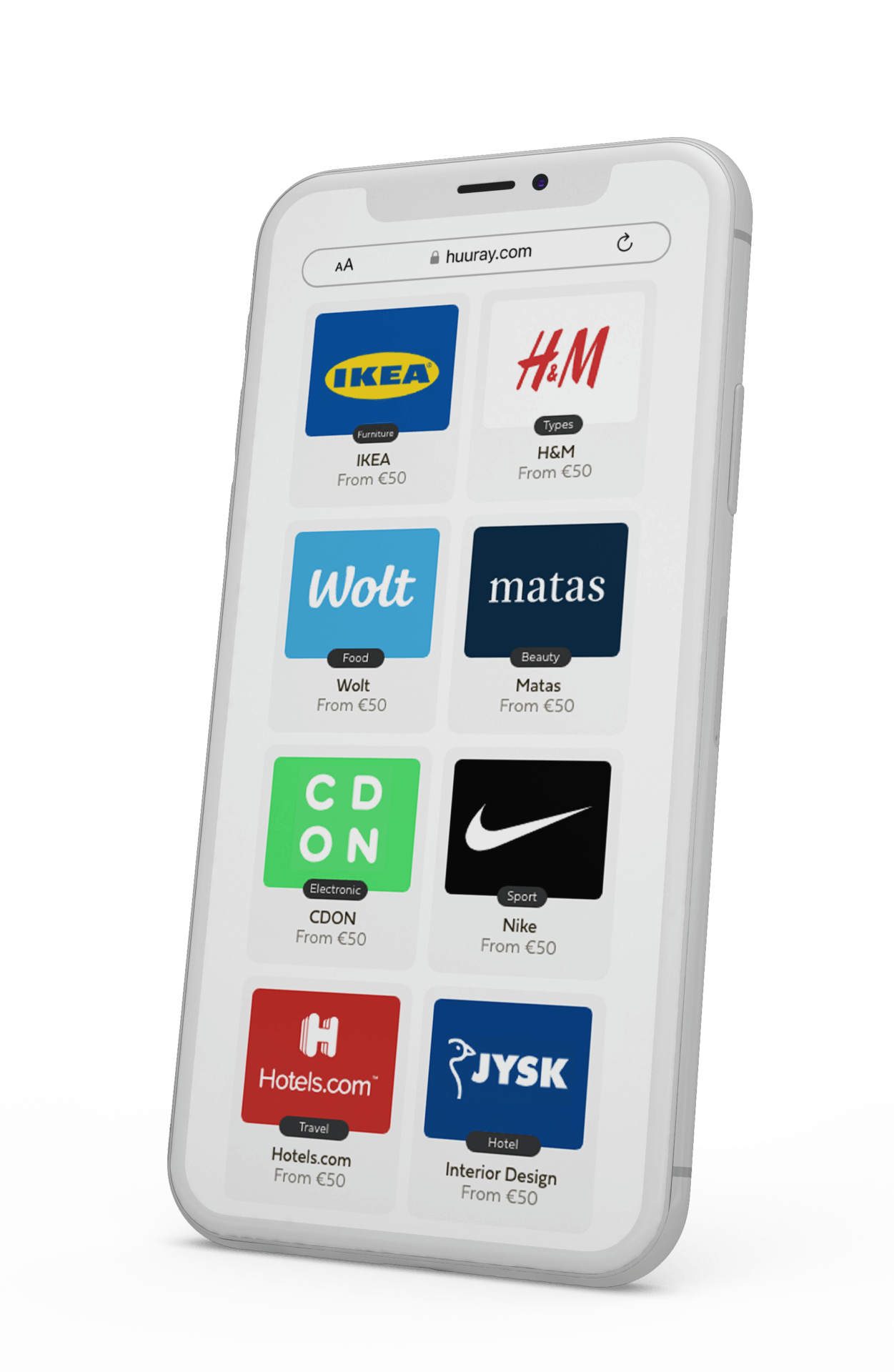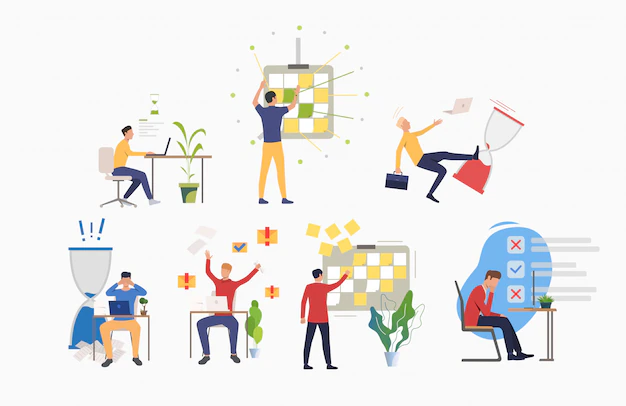80 Employee Engagement Ideas for Success


by Signe Hegart
October 17, 2023
Are you looking for ways to boost employee morale and create a more dynamic and motivated team? Look no further! In this article, we’ll explore 80 Employee Engagement Ideas that will not only energize your team but also include employee incentives. These ideas are designed to promote a positive work environment, foster collaboration, and ultimately drive the success of your organization. So, let’s dive in and discover creative ways to engage and motivate your employees!
Jump to section
What are Employee Engagement Ideas? ????
Employee Engagement Ideas refers to strategies and activities that companies can implement to foster a sense of commitment, motivation, and satisfaction among their employees. By engaging employees, organizations can boost productivity, improve job satisfaction, and reduce turnover rates. These ideas can range from small gestures to large initiatives, all aimed at creating a positive work environment and cultivating a strong employee-employer relationship.
Why are Employee Engagement Ideas important?
Employee engagement ideas are important for several reasons:
- Increased Productivity: Employee engagement is a key driver of productivity. Engaged employees are not just present at work; they are fully invested in their tasks. They take ownership of their responsibilities and put in extra effort to ensure that they are accomplished to the best of their abilities. This heightened level of motivation results in higher quality work, greater efficiency, and ultimately, increased output. Productivity improvements can be significant, leading to more work done in less time, which is crucial for an organization’s competitiveness and profitability.
- Higher Retention Rates: Employee turnover can be a costly and disruptive challenge for organizations. When employees are engaged, they are more likely to feel a sense of loyalty and commitment to their company. They find value and purpose in their work, and this sense of belonging makes them less likely to seek opportunities elsewhere. High retention rates mean that an organization can save on recruitment and training costs while also benefiting from a more experienced and knowledgeable workforce.
- Improved Morale: Engaged employees tend to have higher job satisfaction and morale. When employees feel that their work is meaningful, and they are appreciated for their efforts, they are generally happier in their roles. This happiness contributes to a positive workplace atmosphere where employees are more cooperative, enthusiastic, and supportive of one another. A high morale is infectious and can spread throughout the organization, making it a more enjoyable and motivating place to work.
- Enhanced Innovation: Employee engagement is closely linked to innovation. Engaged employees are more likely to contribute creative ideas and suggestions. They feel a sense of ownership in the company’s success and are motivated to share their insights. This free flow of ideas can lead to innovations in products, services, processes, and problem-solving. Engaged employees are often at the forefront of driving positive change within the organization, making it more competitive and adaptable in a rapidly evolving business landscape.
- Better Customer Service: Engaged employees understand the importance of customer satisfaction and its impact on the success of the organization. They are motivated to provide excellent customer service, going the extra mile to meet customer needs and expectations. Their commitment to the company’s goals, combined with a genuine desire to serve customers well, leads to improved customer relationships and loyalty. Satisfied customers are more likely to return, refer others, and contribute to the organization’s long-term success.
- Cost Reduction: High levels of employee engagement can lead to significant cost reductions in various ways. Engaged employees tend to experience lower absenteeism and reduced sick leave. They are generally healthier, less stressed, and more motivated to come to work. This translates into cost savings for the organization in terms of lower healthcare and disability costs. Reduced absenteeism also means less disruption to work schedules, increased work continuity, and overall cost savings.
- Increased Employee Loyalty: Engaged employees often exhibit a strong sense of loyalty to the company. They feel valued and appreciated, and this loyalty can translate into longer tenures. With lower turnover rates, organizations can maintain a more stable workforce, reducing disruptions in staffing and the associated recruitment and training costs. Long-serving employees also tend to develop deep institutional knowledge, contributing to the organization’s institutional memory and overall resilience.
- Positive Company Culture: A culture of employee engagement fosters a more positive and inclusive work environment. It encourages open communication, trust, and collaboration. This positive culture not only motivates existing employees but also attracts top talent. Prospective employees are more likely to choose organizations with a reputation for valuing and engaging their staff. A positive company culture helps with recruitment efforts and promotes a sense of belonging and shared purpose among employees.
- Higher Profitability: Employee engagement has a direct impact on an organization’s bottom line. Engaged employees are more productive, customer-focused, and committed to the company’s goals. This heightened commitment leads to increased revenue, better customer relationships, and overall higher profitability. The positive impact of engaged employees on the financial performance of the organization cannot be overstated.
- Adaptability to Change: Engaged employees are more likely to adapt to change. They have a vested interest in the organization’s success and are willing to embrace new strategies and challenges. They are motivated to learn, grow, and develop their skills to help the company evolve and thrive in a dynamic business environment. Their adaptability to change makes the organization more resilient, innovative, and better equipped to navigate uncertainties.
Related: 25 Employee Awards and Incentives To Motivate
80 Employee Engagement Ideas
Employee engagement is crucial for the success and well-being of your organization. Here are 80 Employee Engagement Ideas to help create a positive and productive work environment:
1. Create a welcoming onboarding process for new hires

2. Offer mentorship programs
3. Encourage open and honest communication
4. Provide regular feedback and recognition
By combining Employee Engagement Ideas with gift cards, you can create a positive and motivating workplace environment. Recognizing employees, promoting wellness, and providing opportunities for personal and professional growth are essential for fostering engagement. Gift cards serve as versatile incentives, allowing you to show appreciation, encourage teamwork, and enhance employee satisfaction. When employees feel valued and engaged, they become more invested in the success of the organization, ultimately leading to increased productivity and a stronger, more cohesive team.

Send yourself a gift card
5. Set clear and achievable goals
6. Invest in professional development opportunities
7. Promote work-life balance
8. Offer flexible work arrangements
9. Celebrate work anniversaries
10. Recognize employees’ personal milestones (birthdays, weddings, etc.)

11. Implement a wellness program
12. Organize team-building activities
13. Create a comfortable and ergonomic workspace
14. Establish a diverse and inclusive workplace
15. Encourage knowledge sharing among employees
16. Offer opportunities for employees to lead projects
17. Conduct regular one-on-one meetings
18. Allow employees to work on passion projects
19. Provide regular training and upskilling

20. Recognize and celebrate individual achievements
21. Offer opportunities for advancement within the company
22. Conduct employee surveys for feedback
23. Establish a suggestion box for new ideas
24. Implement a peer recognition program
25. Encourage creativity and innovation
26. Offer a competitive compensation package
27. Provide a relaxed dress code
28. Offer regular social events

29. Create a transparent company culture
30. Promote a healthy work environment
31. Encourage volunteer work
32. Offer opportunities for cross-training
33. Provide access to counseling services
34. Recognize and reward loyalty
35. Foster a culture of collaboration
36. Support remote work options
37. Celebrate cultural and religious holidays

38. Establish clear values and mission statements
39. Create a recognition wall in the office
40. Allow employees to personalize their workspace
41. Encourage involvement in decision-making processes
42. Establish a continuous improvement culture
43. Provide regular updates on company performance
44. Offer health and wellness challenges
45. Create a book club or discussion group
46. Promote diversity and inclusion training

47. Celebrate achievements with company-wide emails
48. Offer opportunities for public speaking
49. Recognize and celebrate work-related certifications
50. Support local and global causes
51. Establish a system for peer feedback
52. Provide access to online courses and resources
53. Encourage knowledge-sharing sessions
54. Sponsor attendance at industry conferences
55. Create a mentorship program for diverse hires

56. Promote sustainability and eco-friendly practices
57. Offer a “bring your pet to work” day
58. Support employee side projects
59. Provide opportunities for job rotation
60. Encourage employees to take regular breaks
61. Implement a “no meeting” policy one day a week
62. Recognize and celebrate team achievements
63. Create an employee recognition board
64. Offer flexible hours

65. Provide regular team lunches or dinners
66. Conduct regular town hall meetings
67. Establish a system for anonymous feedback
68. Support employees’ participation in industry associations
69. Organize charity events and fundraisers
70. Implement a “casual Friday” dress code
71. Offer a wellness stipend for fitness activities
72. Recognize and celebrate personal growth
73. Provide access to a meditation or relaxation room

74. Encourage employees to pursue hobbies and interests
75. Celebrate national and international holidays
76. Establish clear career paths
77. Create a culture of gratitude
78. Offer opportunities for volunteering during work hours
79. Support employees in setting and achieving personal goals
80. Provide a platform for sharing employee success stories
Remember that every organization is unique, so tailor these ideas to your company’s culture and the preferences of your employees. Regularly assess the impact of your engagement initiatives and adjust as needed to keep your employees motivated and satisfied.
Related: 46 Employee Engagement Tools: Create a Culture of Engagement
Let’s have a chat
3 statistics about Employee Engagement
Highly engaged teams show 21% greater profitability
Gallup
96% of employees believe showing empathy is an important way to advance employee retention
Forbes
Disengaged employees cost U.S. companies up to $550 billion a year
The Engagement Institute
Effective strategies for improving employee engagement in the workplace ????
Improving employee engagement in the workplace is crucial for boosting productivity and job satisfaction. Here are some effective strategies to enhance along with you Employee Engagement Ideas:
Clear communication
- Foster open and transparent communication: Open communication involves creating an environment where employees feel comfortable sharing their ideas, concerns, and feedback. This can be achieved through regular meetings, suggestion boxes, and accessible leadership.
- Ensure that employees understand the company’s mission, values, and goals: It’s essential to clearly communicate the company’s mission and values to employees. These foundational principles provide a sense of purpose and help align individual and team goals with the overall objectives of the organization. Regularly remind employees of the company’s mission and how their work contributes to it.
Leadership and management
- Train and support managers to be effective leaders and communicators: Leadership training programs can equip managers with the necessary skills to lead teams effectively. This includes training in communication, conflict resolution, and coaching.
- Encourage managers to provide regular feedback and recognition to their teams: Managers play a pivotal role in employee engagement. Encourage them to give constructive feedback and recognize employees for their contributions. Regular one-on-one meetings can help foster a culture of ongoing feedback and support.
Recognition and rewards
- Implement an employee recognition program: Establish a structured program for recognizing and rewarding outstanding performance. This could include monthly awards, peer recognition, or monetary incentives. Ensure the recognition program is fair and accessible to all employees.
- Recognize and celebrate personal milestones and achievements: In addition to work-related achievements, celebrate personal milestones like birthdays, weddings, or major life events. Creating a culture of celebration enhances employees’ sense of belonging and appreciation.
Professional development
- Offer opportunities for skill development, training, and career advancement: Provide access to workshops, courses, and resources to help employees develop new skills and advance their careers. Support them in setting and achieving personal and professional goals.
- Provide pathways for employees to acquire new skills and take on more significant roles: Create a clear career progression plan that outlines the steps employees can take to grow within the organization. Offer mentorship and on-the-job training to help them acquire the skills necessary for taking on more responsibilities.
Work-life balance
- Promote a healthy work-life balance by offering flexible work arrangements: Allow employees to have control over their work schedules, whether that means flexible hours, remote work options, or compressed workweeks.
- Encourage employees to take regular breaks and disconnect from work when needed: Emphasize the importance of taking breaks during the workday to recharge. Encourage employees to step away from their desks, engage in physical activities, or practice relaxation techniques to maintain a healthy work-life balance.
Employee Involvement
- Involve employees in decision-making processes and seek their input on company policies: Engage employees in decision-making through focus groups, surveys, and open forums. Show that their opinions are valued and can influence the direction of the company.
- Create cross-functional teams to engage employees in projects and initiatives: Form teams that include members from various departments or levels of the organization to work on special projects or initiatives. Cross-functional teams promote collaboration, diversity of thought, and personal growth.
These strategies, when implemented effectively, can significantly enhance employee engagement, resulting in a more motivated and satisfied workforce. Tailor them to your organization’s unique culture and needs for the best results.
Read also: 50 HR Tools That Will Transform Your Talent Management Strategy
Employee Wellness programs integrated to enhance employee engagement
Employee wellness programs and initiatives can play a significant role in enhancing employee engagement by promoting physical, mental, and emotional well-being. Here are some wellness program ideas to integrate into your workplace:

Health Screenings
Comprehensive Health Assessment: Offer a thorough health screening that covers vital health metrics, including blood pressure, cholesterol, blood sugar levels, BMI (Body Mass Index), and more. This allows employees to gain a comprehensive view of their health.
Early Detection: Emphasize the importance of early detection of health issues. Detecting problems in their early stages can lead to more effective and less invasive treatment, reducing the overall impact on employees’ well-being.

Fitness Challenges
Team-Based Competitions: Encourage team-based fitness challenges to promote camaraderie and teamwork. Teams can compete in achieving fitness goals or participate in friendly competitions like relay races or obstacle courses.
Incentives and Rewards: Provide incentives and rewards for participation and achievements. Recognize not only the winners but also those who demonstrate consistent effort and improvement. Rewards can include gift cards, fitness equipment, or additional paid time off.

Gym Memberships
Affordability: Negotiate discounts or subsidies with local gyms or fitness centers to make gym memberships more affordable for employees. Consider providing options for different types of fitness facilities, such as traditional gyms, yoga studios, or wellness centers.
Flexible Access: Ensure that gym memberships are flexible and can be used during various hours, including before or after work, to accommodate different schedules and preferences.

Nutrition Education
Healthy Snacks and Meals: Provide healthy snack options in the workplace, such as fresh fruits, vegetables, and nuts. Consider partnering with local eateries to offer nutritious meal options in the office or nearby.
Nutrition Consultations: Offer employees the opportunity to consult with a nutritionist or dietitian. Personalized guidance can help individuals make dietary choices that align with their specific health and wellness goals.

Mental Health Support
EAPs: Employee Assistance Programs (EAPs) provide confidential counseling and support for employees facing personal or work-related challenges. Ensure that employees are aware of and comfortable using these services.
Therapist Access: Partner with mental health professionals to offer access to therapists or counselors, either on-site or through virtual sessions. This provides employees with a safe space to address mental health concerns.
Stress Management Workshops: Conduct workshops on stress management, resilience, and mindfulness. Equip employees with techniques to cope with stress and maintain their mental well-being.
Read also: 90 Jaw-dropping Morale Boosters: Unique Ideas Ensured To Work
Employee Engagement Ideas role in creating a positive workplace culture
Employee Engagement Ideas play a pivotal role in creating a positive workplace culture by shaping the attitudes, behaviors, and relationships of employees within an organization. Here’s how these ideas contribute to a positive workplace culture:
Skill Development
Employee Engagement Ideas that offer skill development opportunities, such as training and workshops, empower employees to enhance their capabilities and feel more confident in their roles. This leads to higher job satisfaction as individuals are more competent and effective in their work. Skill development initiatives provide employees with the tools and knowledge to excel in their current positions. These opportunities allow them to expand their skill sets, stay current with industry trends, and adapt to evolving job requirements. As employees become more skilled and proficient, they gain a sense of accomplishment and confidence in their abilities. This increased self-assurance not only benefits their job performance but also contributes to their overall job satisfaction and well-being. When employees see their competence growing, they are more likely to be engaged, motivated, and content in their roles, knowing they have the skills to meet challenges and seize opportunities.
Career Advancement
When employees perceive clear pathways for career advancement, they tend to be more satisfied with their roles. Opportunities for promotions, new responsibilities, and growth within the organization are key drivers of job satisfaction. Career advancement is a fundamental aspect of Employee Engagement Ideas. It involves providing employees with the means to progress in their careers and take on greater responsibilities within the organization. Employees who see a structured and achievable path for advancement are more likely to be motivated, committed, and satisfied with their roles. The prospect of moving up the career ladder, taking on new challenges, and gaining increased recognition not only boosts job satisfaction but also encourages employees to stay with the organization long-term. Career advancement opportunities create a culture of ambition, development, and loyalty, enhancing the overall workplace environment and employee morale. Employees who believe in the potential for career growth within their organization are more likely to invest their efforts and talents into contributing to its success.
Recognition
Recognition and appreciation for a job well done are essential for job satisfaction. Employee Engagement Ideas that acknowledge and celebrate employees’ contributions instill a sense of accomplishment and worth. Recognition is a powerful motivator in the workplace, and it plays a central role in boosting job satisfaction. When employees receive recognition and appreciation for their hard work, dedication, and achievements, it not only validates their efforts but also fosters a positive work environment. Employee Engagement Ideas that emphasize recognition can take various forms, from simple words of appreciation and thank you notes to formal award programs and public acknowledgments. Recognized employees feel valued, respected, and motivated to continue delivering exceptional performance. They experience a sense of accomplishment and worth, knowing that their contributions are acknowledged and celebrated. This sense of recognition contributes to their overall job satisfaction and engagement, creating a workplace culture where employees feel appreciated and empowered to excel. In a culture of recognition, individuals are more likely to be enthusiastic, dedicated, and content in their roles, which, in turn, benefits the organization as a whole.
Read also: Low Morale In The Workplace: A Guide to Employee Engagement
Conclusion
In conclusion, Employee Engagement Ideas are instrumental in creating a thriving and productive work environment. They are a powerful tool for organizations to boost productivity, reduce turnover, and enhance the overall quality of work life. The importance of these ideas is multifaceted, affecting various aspects of the organization’s performance. Customize the list of 80 Employee Engagement Ideas to match your organization’s unique culture and preferences. Regularly assess the impact of your engagement efforts and adapt as needed to keep your employees motivated and content. Investing in employee well-being and engagement lays the foundation for a culture of success and a thriving, positive workplace environment.



Let’s have a chat
FAQ
Tailoring Employee Engagement Ideas to a specific organization involves considering its unique culture, industry, and the preferences of its employees. Effective customization starts with understanding the organization’s values, mission, and the specific needs and desires of the workforce. This may require conducting surveys, gathering feedback, and collaborating with HR professionals to design initiatives that resonate with the employees.
The benefits of implementing Employee Engagement Ideas are multifaceted. These initiatives lead to increased productivity, as engaged employees are more likely to put in extra effort to accomplish tasks efficiently. High engagement also results in lower turnover rates, saving organizations costs associated with recruitment and training. Morale is improved, fostering a more harmonious work environment. Engaged employees contribute innovative ideas and solutions. This leads to better customer service, as employees who are engaged are more focused on delivering exceptional service to clients. Cost savings can occur in various ways, such as reduced absenteeism and lower healthcare expenses. Moreover, a culture of employee engagement leads to a more loyal workforce, as employees develop a sense of loyalty to their organization. This enhanced culture also helps attract top talent, contributing to overall growth and profitability.
Regular assessment is crucial to ensure that engagement initiatives remain effective and relevant. This could involve annual or bi-annual employee engagement surveys, feedback sessions, and analyzing key performance indicators. Periodic assessments allow organizations to identify areas for improvement and make necessary adjustments to keep their employees motivated and satisfied.